
| About Malaysia | Back | ||||||
 |
Home | About | Contact | Malaysia | |||
| Places in Malaysia | Site Map |
| Forest | Natural Resources | Population | Language | Public Transport | Currency | Food | Governance | ||||||||
|
Malaysia consist of a total of 13 states and 3 federal territories with 11 states and 2 federal territories on Peninsula Malaysia, 2 states in northern part of Borneo Island and 1 federal territory off north of Borneo Island. Its latitute coordinate ranges from about 0o50'N to 7o00'N and longtitude coordinate is about 99o40'E to 119o20'E. It is supposed to be a very hot (31oC to 33oC outdoor and 28oC to 29oC indoor) and humid country with average rainfall of 2000mm to 2500mm per year. However, it can be very dry and hot or wet (until flood) and hot. The average low land temperature ranges from 22oC to 32oC.
Malaysia has a land area of about 329,758 km2. 70% for Malaysia consist of tropical rainforest. Malaysia is also a highland country where most of its land are either high hills or low hills. The highest peak in Malaysia is Mount Kinabalu (4,095 m / 13,435 ft above sea level, mainly granite) in Sabah and the highest peak in Peninsula Malaysia is Mount Tahan (2,187 m ) in Pahang. The longest river in Malaysia is the Rajang River (563 km, originates in the Iran Mountains) in Sarawak and the longest river in Peninsula Malaysia is the Pahang River (459 km, confluence of Jelai and Tembeling rivers on the Titiwangsa Mountains). The largest man-made lake in Malaysia and the South East Asia is Lake Kenyir. The largest natural freshwater lake in Peninsula Malaysia is Lake Bera. The tallest waterfall in Malaysia is Stong Waterfall (270m) in Kelantan. Malaysia's mountain ranges are mainly built up of plutonic igneous rock which are usually hard. This igneous rock are molten rock from underground being pushed up and then cooled before becoming solid. One is the Crocker Range in Sabah and it is said that this range is still 'growing'. The type of igneous rock in Crocker Range is granite. However, in Sarawak near the Sabah border, there is one range made-up of sedimentary rock where Mulu National Park is situated. The type of sedimentary rock in Mulu is limestone. The limestone composition make it partially soluble, creating many forms or landscape usually Karst topology. Malaysia has about 5-6 types of forest. In Peninsula Malaysia, there are 3 types of forest. The main one is dipterocarp (dominant species is Dipterocarpaceae family) which covers 95% of Malaysia's forest. Dipterocarp is so called because of their fruits that have seeds with two wings (di = two; ptero = wing; carp = seed). Peat swamp (beyond the coastline on both east and west coasts) covers about 3.34% and mangrove forests (muddy shores, lagoons and estuaries of tidal rivers) cover about 1.84%. In Sarawak, there are Hill Mixed Dipterocarp Forest (in the interior, 1,500 m and below), Montane Forest (in the interior above 1,500 m), Peat Swamp Forest (low coastal areas), Mangrove Forest (in tidal and esturine areas, from mud area to where the saline waters end) and Kerangas / Heath Forest (on sandy terrain). Sabah is about the same but it has Coastal Beach forests instead of Peat Swamp forrest. However, there may be other types of forest in some small areas. Malaysia's tropical rainforest is 130 million years. It has many native trees and plants. Malaysia's tropical rainforest has the tallest tree called the Tualang tree. The middle part of Dipterocarp Forest (500-700m above sea level) in Malaysia which is harder to reach has the largest species flower in the world called Rafflesia (Kingdom: Plantae, Division: Magnoliophyta, Class: Magnoliopsida, Order: Malpighiales, Family: Rafflesiaceae, Genus: Rafflesia) species. The lower part of Dipterocarp Forest can be seen in popular forest reserve like Taman Negara in Peninsular Malaysia and Sepilok Forest Reserve in Sabah. Previously, Malaysia's most important natural resources was tin ore which helped in the infrastructure development of Malaysia in the 50's and 60's. Tin are was mostly found in the Larut and Kinta Valley in Perak and Klang Valley in Kuala Lumpur. Tin is the most important resource in pewter ware. Now, Malaysia's most important natural resources is Petroleum which are mostly offshore Sarawak (since 1950's) and Terengganu. Other natural resources were gold in Bau (Sarawak) and iron in Sg Lembing (Pahang). The population of Malaysia was about 26 million (year census). The population density was about people per km2. Out of this population (year census), 57% was Malay, 24% of its population was of Chinese race, 7% was Indian race, 11% was Indigenous race and the rest was of other races. Apart from this, there are many foreigners working in Malaysia especially as maid and factory workers for women and for men, in construction and food sector. Oh yes, almost forgotten, Malaysia's official religion is Islam. The majority of Malaysians and its residents can speak English and Bahasa Malaysia / Melayu, Malaysia's national language. As for chinese dialects, most people in Kuala Lumpur, Ipoh and Kuantan speak Cantonese, most people in Penang, Kedah and northern Perak speak Hokkien and most people in Sarawak (especially Setiawan and Sibu) speak Foochow. Many chinese in Malaysia can speak Chinese Language too. The indian community speaks mostly Tamil. Sikh people will speak their Sikh Language. The orang asli or indigenous people, they have their own dialects. If not wrong, each group / subgroup has their own dialect. Public transport in Malaysia is of international standard only in Kuala Lumpur and its surrounding areas like Petaling Jaya and Subang Jaya. These areas are well connected through the Light Rail Transit (LRT) system with KL Sentral as its main hub, railway system by Kereta Tanah Melayu (KTM), buses and taxis. As for airports, there are two airports in Selangor supporting Kuala Lumpur. One is Sultan Abdul Aziz Shah Subang Airport in Selangor and a newer one called Kuala Lumpur International airport (KLIA) which is not located in Selangor, nearer to Negeri Sembilan and Putrajaya. Kuala Lumpur is not near the sea but it uses Port Klang in Selangor as its seaport. Other cities and towns in Malaysia have tar roads which can range from 1-lane to 5-lanes for one direction. The frequency of buses to one area is very low and taxis are difficult to find except in bigger towns like George Town, Johor Baru, Ipoh, etc. So, if want to visit these other areas, it is best to follow tour groups. There are many travel agencies in the cities and towns. You can get package tour to other cities or go to other cities / towns on your own then find tours (half day or full day) that you prefer in the city / town itself. The Malaysian currency is called Malaysian Ringgit (MYR) or sometimes Malaysian called it Ringgit Malaysia (RM). The denominations in paper / plastic forms are RM1, RM5, RM10, RM50 and RM100. The denomination of syilings are 5 sen, 10 sen, 20 sen and 50 sen. RM1 = 100 sen. Malaysia's central bank is called Bank Negara Malaysia located near Merdeka Square. So, if you need to ask regarding Malaysia currency visit Bank Negara Malaysia. As for food, Malaysia especially Penang wants to promote itself as the favourite destination for tourist. There are some cuisines which can be found all over Malaysia like nasi lemak, nasi kandar, satay and pau / buns. There are some good restaurants which have cultural performances and stage performances like Saloma Bistro & Theatre Restaurant in KL and Eden Seafood Village in Batu Feringhi, Penang. Local hawker food can be found in Petaling Street (KL's Chinatown) and Penang's Gurney Drive. Western, European and Indian restaurants can also be found in Batu Ferringhi, Penang and in Kuala Lumpur. The system of governance in Malaysia is based on the Westminster System that is practiced in United Kingdom. Malaysia practices parliamentary democracy and constitutional monarchy. This means that Malaysia is a democratic country with elected parliamentary representatives from all the states in Malaysia and Malaysia has a head of state called the Yang Di-Pertuan Agong (YDPA) protected under the federal constitution. Malaysia's system of governance is divided into 3 branches. The first being the executive system. The head of the government or the head of the executive is the Prime Minister. The Prime Minister must have the majority support from members of the parliament. He will then be officially appointed by the YDPA. The second branch is the Judiciary System. The third branch is the Legislative System. It has a bicameral legislative system. This means that the legal system has two chambers or houses. The electricity voltage in Malaysia is 220-240 volts AC at 50 cycles per second. Standard 3-pin square plug and sockets are used. Malaysia has many places for tourist to visit under various categories. Eco-tourism is very popular in states like Sarawak, Sabah and areas surrounding the Titiwangsa Range. Heritage sites tourism are popular in Malacca (Melaka) and Penang. Hill Resorts in Perak and Pahang. Beach resorts in islands surrounding Malaysian water. Health and Medical Tourism in Kuala Lumpur, Selangor and Penang. Education Tourism in cities. Malaysia also has homestay program and "Malaysia My 2nd Home (MM2H)" program. |
Malaysia's Flag & Emblem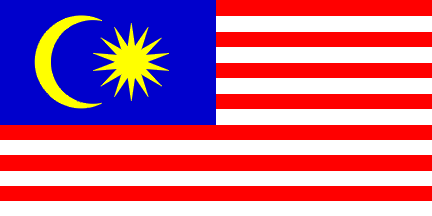

|
Malaysia's National Flower
|
|||||||||||||
Top part of Penang Waterfall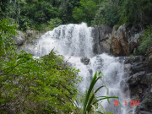
|
Batu Caves in Selangor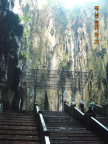
|
||||||||||||||
Stalactite in Tempurung Cave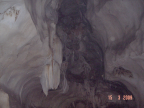
|
Stalagmite in Tempurung Cave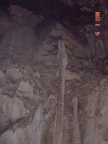
|
||||||||||||||
Meromictic Lake in Penang National Park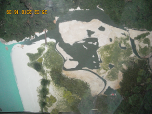
|
Saga Tree by a road side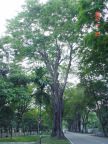
|
||||||||||||||
Bougainvilla flower & Ixora Flower / Jejarum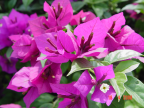
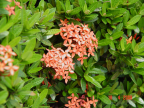
|
Angsana Tree by a roadside
|
||||||||||||||
Malaysia's Rubber Plantation
|
Royal Selangor pewter on chinese gods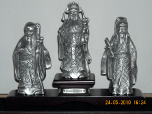
|
||||||||||||||
Indigenous people in Peninsula Malaysia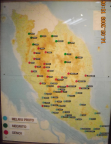
|
Malaysia's National Monument
|
||||||||||||||
Indigenous people in Peninsula Malaysia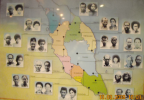
|
|||||||||||||||
Malaysia's Railway Station in KL
|
Malaysia's Kuala Lumpur International Airport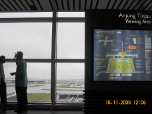
|
||||||||||||||
Penang Ferry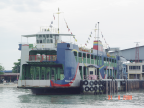
|
Trishaw in Penang
|
||||||||||||||
Bank Negara Malaysia (smaller building)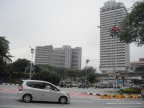
|
|||||||||||||||
Nasi Lemak & Satay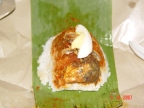
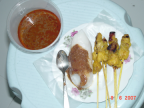
|
Penang's Asam Laksa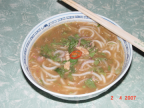
|
||||||||||||||
Malaysia's Judiciary Building in Putrajaya
|
Malaysia's Parliament Building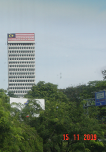
|
||||||||||||||
White Hibiscus & Red Hibiscus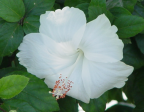

|
Pinkish-White Hibiscus & Hibiscus Plant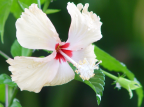

|
||||||||||||||
Batu Ferringhi beach in Penang
|
Genting Highlands Resort
|
||||||||||||||

|

|
||||||||||||||
The owner of freecheapsite.com will not be responsible for any error in information provided.
Any loss resulting from the information provided in this site, directly or /and indirectly will be at your own expense and the owner will not take any responsibility whatsoever. See Disclaimer